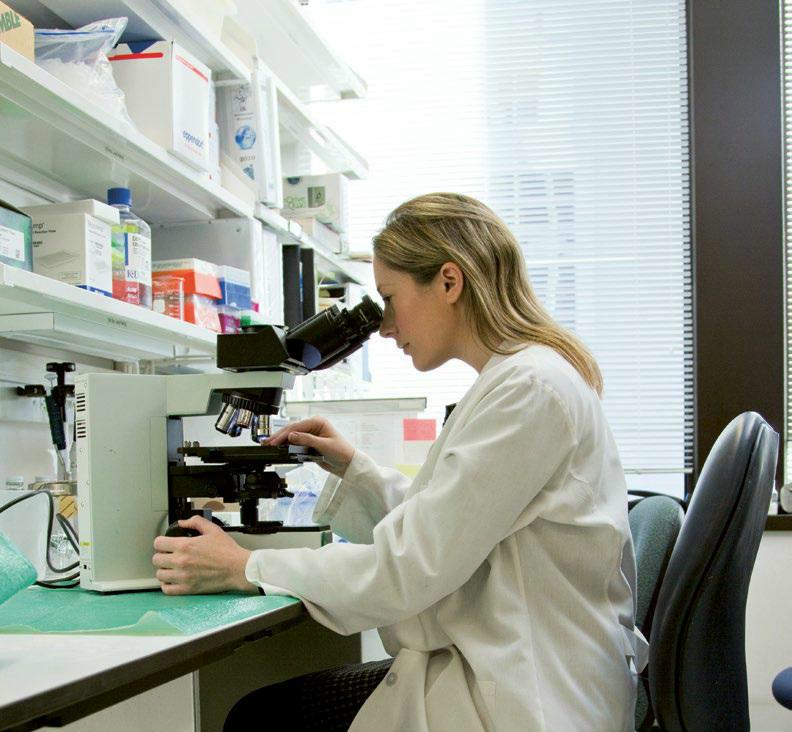Life-sciences: an asset class here to stay
The rise of interest by real estate developers and investor in the life-sciences segment has led to it potentially now constituting an asset class in its own right, in the same way as offices, logistics… To find out just what this segment means to the market, we conducted a ‘cross interview’ with Michel Leemhuis, CEO of Netherlands-based developer Kadans (assisted by Senior Asset Manager Sandrine de Wouters) and Matt Lee, Head of Science & Technology at UK-based property agent and advisor Carter Jonas.
Can a segment as ‘niche’ as life-sciences really give rise to an asset class in the same way that offices and residential are asset classes?
Michel Leemhuis: Yes, to my mind it certainly is an asset class in its own right. If we look at the profile of our tenants we see a very specific group of users of the space. These organizations have a real need for a specific type of property such as clean rooms, laboratory space and other types of research facility. It is a very different segment from other types of offices. But we had to convince banks and others of this in the early days. I also think it is a segment which is set to grow.
Matt Lee: From past experience at Manchester Science Park, buildings designed as research facilities within the site achieved rents which outperformed those of a standard equivalent office space significantly. And while the term ‘niche’ means ‘appealing to a small specialized population’, the amount of overall recognition within the market, including government support, means that while this segment is specialized, it is no longer small. There is a prolonged period of high demand set against shortage of supply, hence it is becoming a large market. There is a massive increase in developers – particularly international – looking for life-sciences opportunities. And they are not always interested in other segments. I also agree with Michel that this is a segment which is here to stay.
Michel Leemhuis: The gap between supply and demand, I would add, is not only in the UK but is being seen right across continental Europe, and we expect this to grow further as demographic changes take root (ageing population for example). This lack of demand in Europe will grow because I would say that the continental market is around five years behind the UK in time-scale.
Does this type of property require specialist architectural competences and other specialized knowledge?
Michel Leemhuis: We only develop for our own portfolio, and we do know what the properties require. You have to speak the language of the sciences and you need to have profound knowledge of the different lab types and other requirements. There are such issues as the internal height requirement of the buildings to be taken into account. We develop multi-tenant properties, which brings another set of requirements, and we always stimulate our tenants to meet with each other to create cooperation and innovation, with meeting areas designed in from the outset. We believe this is a success factor for these campus environments. You can’t operate in this segment without having any knowledge of the specific requirements. And it is the whole team (architects, client, developer…) which needs to have this specialized knowledge.
Matt Lee: In my own experience (including working for a science and technology developer) it is also important to future-proof the buildings, making them flexible enough to cope with evolving market trends. This is quite a challenge when you are talking of very specific needs within the building. You also need to have an understanding about who you are tailoring a particular facility towards, and ensure you meet their requirements. Power is another major consideration, especially if you are redeveloping a facility from another use such as offices. A significant increase in power is required. If you haven’t taken advice about this at the beginning of a development, it can lead to substantial time delays. Floor loading, air handling, vibration responses, delivery access, all of these and more need to be considered, not to mention storing gases and chemicals, drainage requirements... All this may put a traditional developer off but is part of the scenery for life-sciences developers!
Is the segment already in place in Belgium, and if so, where? If not, do you see any probable future locations? How large could the segment be?
Sandrine de Wouters: In Belgium the segment is already there, but with huge demand which is very exacting about its location. It wishes to locate within the right eco-system. The supply side, the investment side, is lagging a long way behind this demand in Belgium. And it is a fragmented and as yet immature supply side, which is why in our company we have to work quickly to respond to our clients’ demands. People call all the time asking about locations with universities, science parks… And Belgium is very strong in the pharmaceutical sector, with companies such as GSK, Janssen Pharmaceuticals, UCB which doubtless adds to the attraction for life-sciences. There are also highly ranked universities. There are clusters close to the well-known universities, and there is also the fact that the percentage of GDP spent within this field is also relatively high compared to the rest of Europe. Tax advantages, along with support for R&D, in Belgium are also advantageous.
Universities and clusters have been mentioned. How important is it to be near to expertise of this type?
Matt Lee: Proximity to universities creates opportunities for collaboration, and access to talent. These communities give rise to the development of clusters, and clusters attract companies, which creates further demand. Here in the UK, traditional university cities such as Oxford, Cambridge, London and Manchester have very strong clusters, built on the foundations of cooperation with the universities, NHS trusts and start-ups. When talking to potential international companies from outside the UK, it is very clear that the opportunity to collaborate with universities and with organizations such as the NHS, is an important factor. Access to the right talent is also critical – without this talent companies can’t grow. Universities provide a pipeline of available talent. What is also happening now is that the life-sciences companies are working with universities to deliver full or part modules to students. But it is also true that clusters can develop around large companies, as Sandrine mentioned.
British universities have been mentioned. Which are the universities in Belgium which fulfill the same role?
Michel Leemhuis: Among others, the universities in Leuven, Louvain-la-Neuve and Ghent are well known for their quality research. So there are campuses which will lead to the development of clusters where companies can grow. I think the European situation is the same as the one Matt has described in the UK – the importance of proximity to a ‘knowledge institute’ (university, hospital…). We recently conducted a survey in the Netherlands which showed that 85% of our tenants collaborated with other companies on the site. Mutual research and knowledge-sharing takes place. And these tenants will always stay on site in such circumstances.
What are the prospects for health malls, retail malls attached to a hospital.?
Matt Lee In the UK it is less likely that this could happen around NHS hospitals, although something similar could take place with private hospitals. We have, however, seen the development of a life-science innovation campus located on a Manchester hospital site, which is probably the nearest comparison. And this also provides services to patients and commercial space for companies collaborating with the trust.
Sandrine de Wouters: I believe that the future development of life-sciences will take place on existing science parks. There is still room to build on existing science parks and this will happen before new locations are created. There is one new science park which is being developed around a new large hospital, in Liège, but it is not really retail, but research facilities, as Matt has described.
Michel Leemhuis, Can you tell us about funding for the life-sciences sector in these difficult times and about the need for specialist agencies in this field?
Michel Leemhuis: We talk about funding a great deal with our shareholder AXA. There is still a great deal of interest in this sector when compared to other asset classes such as offices or retail. So we expect this to remain – it was even resilient during the pandemic. But banks are of course a bit more hesitant at the moment, which could be worrying because these are high cost facilities.
When it comes to specialist agencies, it is key to be dealing with the right team, and this could be an in-house team or an external team, with high knowledge of this. You are not merely offering space but creating an environment.
And Matt Lee, How do you see the attractiveness of the UK market in light of the current volatile political situation, and what about the impact of high energy prices?
Matt Lee: These are the questions on everybody’s mind. There is a lot of interest in the sector, and investment is still coming. Occupiers may face more challenges in raising investment at the moment, however this year started strongly and the investment levels over the last couple of years show that companies have resilience.
Where energy is concerned, this sector is high energy use, especially in electricity. So the impact is proportionally higher in life-sciences. But no-one knows how long this macro-economic situation will last. It cannot be denied that if a lot of your available funds are being spent on energy, you cannot grow as quickly. But the life science sector in general is very resilient and has taken on a lot of investment. Also, the NHS is increasingly interested in working with private companies for collaboration on research and to look at emerging technologies which in turn creates demand.



